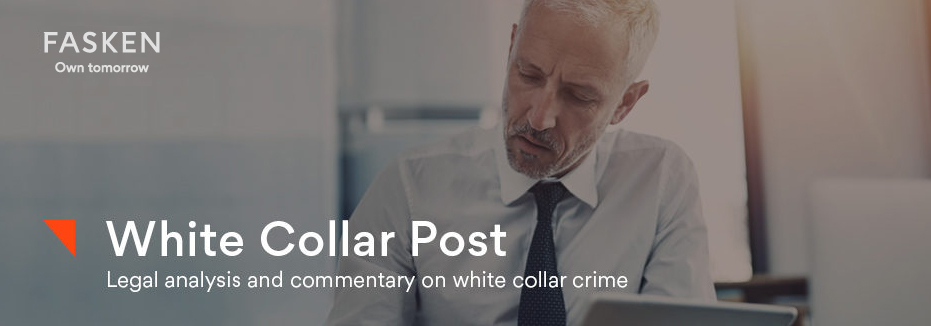Introduction: The Bill C-45 Initiative
Effective corporate compliance to prevent regulatory risk requires a foundation of legal understanding. While corporate accountability and criminal liability has been a recent focus of legislation, law enforcement and regulatory agencies, the modern legislative framework for holding corporations criminally responsible for the wrongdoing[1] was enacted over a decade ago with the passing of Bill C-45 – An Act to Amend the Criminal Code (Criminal Liability of Organizations).
These amendments to the Criminal Code (“Code”) expanded the range of individuals whose acts and omissions could result in corporate criminal liability from those who were “directing minds” to the current standard descried in the Code as “senior officers”. Somewhat surprisingly, there have been few cases interpreting the new Code provisions and considering the scope of individuals that may be “senior officers” for the purposes of the Code. The limited jurisprudence does affirm the increased risk of criminal liability for corporations arising from the Bill C-45 amendments. Decisions from the Courts of Appeal for Ontario and Quebec[2] indicate that courts will interpret the term “senior officer” broadly, encompassing certain lower level managers as well as those employees who manage an important aspect of the corporation’s business.
Replacement of “Directing Mind” with Statutory Formula
The historical and political impetus for Bill C-45 was the 1992 Westray mine disaster, where 26 miners were killed in Pictou County, Nova Scotia. No individuals or corporate employer was ever convicted of a criminal or occupational health and safety regulatory offence. In response to a public inquiry, failed legal proceedings and union lobbying, Bill C-45 was passed to amend the Code to facilitate the conviction of organizations for criminal offences.
Under the former identification theory, a corporation faced criminal liability for the criminal acts of a “directing mind” of the corporation. At common law, the directing mind was defined as a person with:[3]
authority to design and supervise the implementation of corporate policy rather than simply to carry out such policy. In other words, the courts must consider who has been left with the decision making power in a relevant sphere of corporate activity.
The amendments were designed to remedy the inherent limitations of the attached to the “directing mind” paradigm and to better align the Code with the reality of modern, large corporations. As a result, Bill C-45 introduced the defined term “senior officer”. Under the Code, “senior officer” is:
- a representative who plays an important role in the establishment of an organization’s policies; or
- is responsible for managing an important aspect of the organization’s activities; and,
- in the case of a body corporate, includes a director, its chief executive officer and its chief financial officer.
While the definition emphasises the function of the individual within the organization, rather than the individual’s title or identity.
In R. v. Pétroles Global Inc. (“Global Fuels”), the Court of Appeal for Quebec rejected an argument that the term “senior officer” should be based on the ordinary meaning of the term senior officer. Further, the addition of the word “senior” not determinative of individuals with a high degree of operational authority, as opposed to only those holding recognized senior roles or having traditional decision-making authority. Notably, the court confirmed that the purpose of Bill C-45 was to create a new and broader criminal liability regime.
While it remains be seen how the term “important aspect of the organization’s activities” will be interpreted the decisions in Global Fuels and R. v. Metron Construction Corp. (Metron) suggest that courts will take a broad and purposive view of the who qualifies as a “senior officer”. In Global Fuels, the “senior officer” had a significant managerial role over a broad geographical area, was the third highest paid employee in the company and placed a role with respect to the implementation of policies and approval of expenditures. In Metron, the Ontario Court of Appeal indicated that a construction site supervisor could qualify as a “senior officer” under the Criminal Code.[4]
Section 22.1 and 22.2 of the Criminal Code
To convict an organization as a party to a criminal offense, the Crown must prove both the commission of the prohibited act and the requisite mental intent. Bill C-45 recognizes two categories of offences for which a corporation may be criminally liable. Crimes requiring the Crown to prove negligence (s. 22.1) and crimes requiring the Crown to prove fault (other than negligence) (s. 22.2).
For an organization to be found guilty of criminal negligence under s. 22.1 of the Code, the Crown will have to prove that a representative of the organization was a party to such an offence and that a senior officer responsible for the organization’s relevant activities markedly departed from a reasonable standard of care. to prevent the representative from committing the negligent act. A representative is defined as a director, partner, employee, member, agent or contractor of the organization.
Section 22.2 of the Code addresses criminal liability for more traditional offences requiring mens rea (i.e. knowledge or intent) other than negligence. An organization will be considered a party to an offence if a senior officer, with the intent to benefit the organization and acting within the scope of his or her authority: (a) is a party to the offence; (b) has the mental state required to be a party to the offence and directs the work of other representatives so that they commit the offence; or (c) knowing that a representative is or is about to be a party to the offence, does not take all reasonable measures to stop them from being a party to the offence. In effect, there are three alternative scenarios giving rise to potential organizational criminal liability through the acts or omissions of the senior officers.
In Global Fuels, the court held the corporation criminally liable for the conduct of a general manager considered, a “senior officer”, on the basis that, for the benefit of the corporation, the individual participated in a price fixing conspiracy, was aware that territorial managers under his supervision were engaging in price fixing and took no steps to stop them. Global Fuels was found to be liable for breaching s. 45(1)(c) of the Competition Act, by virtue of ss. 22.1(a) and 22.1(c) of the Code, and fined $1 million dollars.[5] We wonder if the Canadian model would be helpful in the prosecution of Wells Fargo for their recent false accounts scandal.
Necessity of Robust Corporate Compliance Systems
The increased risk of corporate criminal liability flowing from the amendments and, more recently, the Global Fuels and Metron decisions underscores the need for organizations to adopt and maintain robust corporate compliance systems to prevent and detect potential wrongdoing. Compliance and training programs should be designed with regard to the broad range of individuals whose conduct may result in corporate criminal liability. Regular and periodic compliance audits and reviews should be conducted to ensure adherence to workplace policies, practices and procedures.
Many organizations are looking to international standards to establish and maintain both an effective and recognized corporate compliance system. One of those is the ISO 31000 standard for risk management. ISO is an independent, non-governmental international organization with membership of 163 national standards bodies. Through its members, it brings together experts to share knowledge, develop voluntary, consensus-based standards, that are relevant to the marketplace. ISO 31000 can be used to establish an enterprise risk management system, that follows an internationally respected format. The hallmark of any manage system, is the harmonization of the program and external verification through auditing.
Corporate governance best practice now includes an effective corporate compliance systems. A rigorous compliance regime will assist mitigating the legal, financial, operational procurement supply claim, and reputational risks associated with potential and actual wrongdoing by a corporation’s senior officers and representatives. Where misconduct has occurred, that results in a criminal investigation, conviction, and sentencing, courts are required take into account, among other things, the measures undertaken by a corporation to reduce the probability of a subsequent offence. For strict liability, also known as quasi-criminal offences, a strong compliance program may serve as a complete defence of due .
Corporate compliance programs must necessarily include a following: an effective tone from the top in the organization, clear policies and procedures to implement the policies, effective and documented training, an internal review and auditing process, an internal whistleblower “hotline” for SOX compliance and ethics concerns, and periodic external auditing. If these effective measures are put into place, then the likelihood of establishing criminal intent on the part of the corporation, or senior executives, is severely limited and substantially mitigated. Although no corporation or senior executive is immune from criminal or quasi-criminal allegations, government investigations, and charges, an effective corporate compliance system will substantially reduce such risk and help effectively ameliorate adverse consequences.
[1] S.C. 2003, c. 21, An Act to Amend the Criminal Code.
[2] R. v. Pétroles Global Inc, 2013 QCCS 4262.
[3] R. v. Metron Construction 2013, OMCA, 541, para. 57.
[4] ibid.
[5] R. v. Pétroles Global Inc.(Global), 2015 QCCS 1618.

